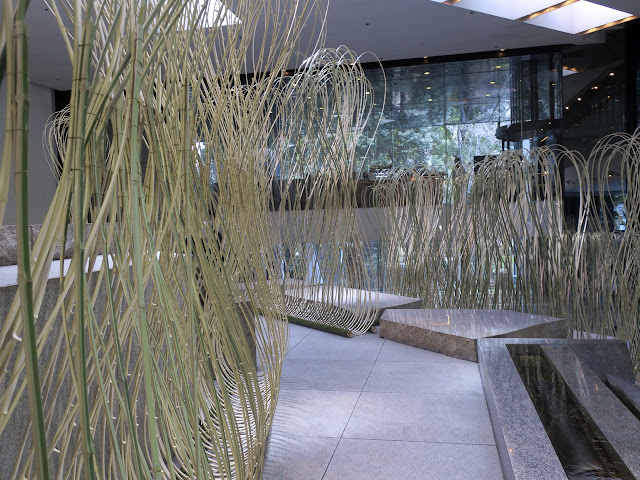Last Tuesday Laurie and I came to Japan for a few days. We arrived at the beginning of Cherry Blossom season and took a day trip to Nagoya to visit an old friend of Laurie's.
What we did not expect to see from the Shinkansen was sleet, then snow on the ground at Shin Yokohama. Above is a photo I took of the front page of the Japan Times, which reported snow falling in the Shinjuku Ward of Tokyo.
A couple of days later we went to Shimoda on the Izu Peninsula. This is the port town where Commodore Matthew Perry confronted the Japanese government in 1854 demanding the opening of the country to the outside world, effectively ending the isolationist policy of the Tokugawa Shogonate.
Spring was definitely in the air and the sun shone beautifully on the fallen camellia blossoms.
A couple of days later we confronted the old and the new at the Hama-rikyu Gardens on the edge of old Tokyo Bay,...
...and shared an ohanami picnic, under the cherry trees, with our friends Joe and Chiyomi Gayton.
The principal reason for our visit to Tokyo was to attend the 'Flower Thanks Day' ceremony at the Sogetsu Head Quarters for my promotion to the Riji Certificate.
My colleague Pat MacKie, from Brisbane, was the only other Australian promoted at this year's celebration.
We were invited to place a flower offering at the beginning of the ceremony...
...including our guests.
Here is Laurie adding his flowers...
...and a group photo of the teachers promoted to Riji Certificate with the Iemoto, Akane Teshigahara.
Following the ceremony a party was held in the Head Quarter's Lounge...
...and the chance for a personal photo with the Iemoto.
This week's Ikebana photo offering is the Bamboo installation that was in the Stone Garden 'Heaven', the Head Quarter building's exhibition space.
Greetings from Christopher, in Tokyo.
24th March 2018



































